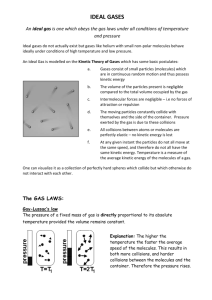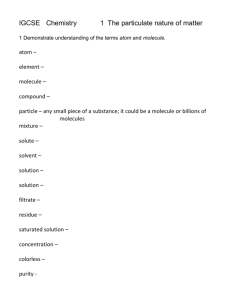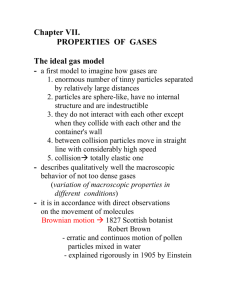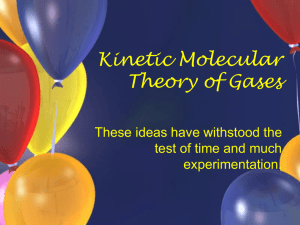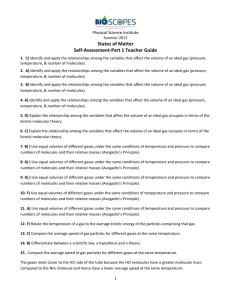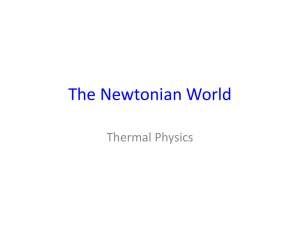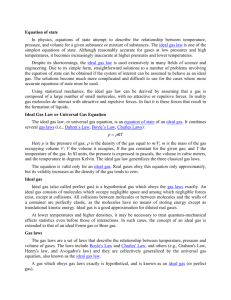answers – the states of matter
advertisement
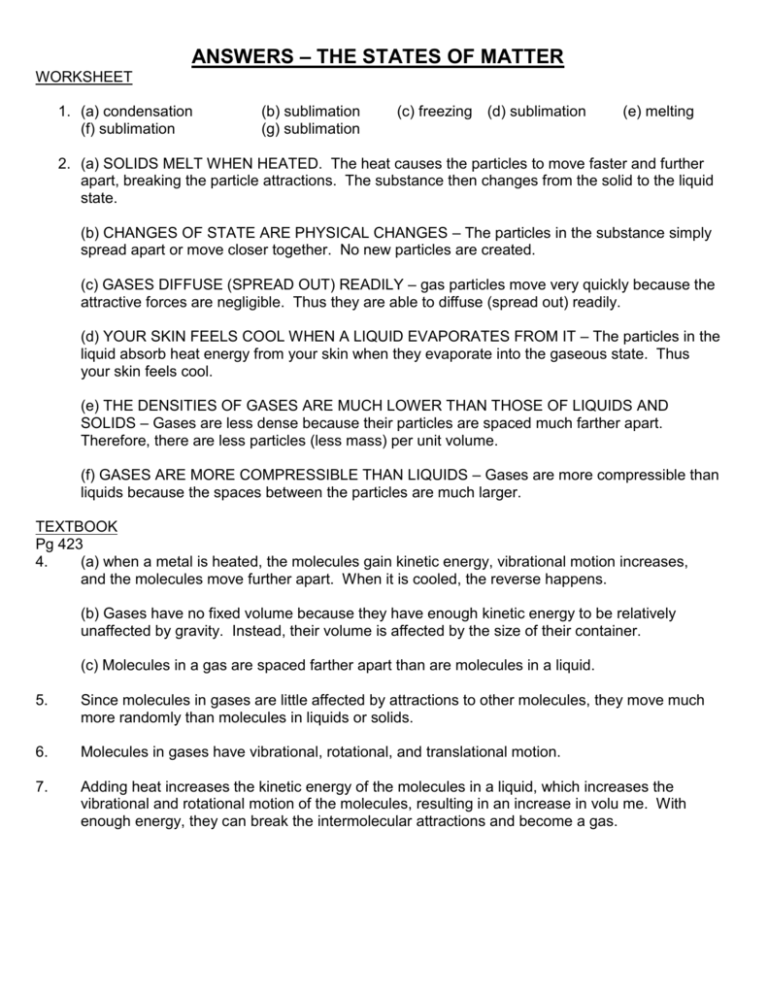
ANSWERS – THE STATES OF MATTER WORKSHEET 1. (a) condensation (f) sublimation (b) sublimation (g) sublimation (c) freezing (d) sublimation (e) melting 2. (a) SOLIDS MELT WHEN HEATED. The heat causes the particles to move faster and further apart, breaking the particle attractions. The substance then changes from the solid to the liquid state. (b) CHANGES OF STATE ARE PHYSICAL CHANGES – The particles in the substance simply spread apart or move closer together. No new particles are created. (c) GASES DIFFUSE (SPREAD OUT) READILY – gas particles move very quickly because the attractive forces are negligible. Thus they are able to diffuse (spread out) readily. (d) YOUR SKIN FEELS COOL WHEN A LIQUID EVAPORATES FROM IT – The particles in the liquid absorb heat energy from your skin when they evaporate into the gaseous state. Thus your skin feels cool. (e) THE DENSITIES OF GASES ARE MUCH LOWER THAN THOSE OF LIQUIDS AND SOLIDS – Gases are less dense because their particles are spaced much farther apart. Therefore, there are less particles (less mass) per unit volume. (f) GASES ARE MORE COMPRESSIBLE THAN LIQUIDS – Gases are more compressible than liquids because the spaces between the particles are much larger. TEXTBOOK Pg 423 4. (a) when a metal is heated, the molecules gain kinetic energy, vibrational motion increases, and the molecules move further apart. When it is cooled, the reverse happens. (b) Gases have no fixed volume because they have enough kinetic energy to be relatively unaffected by gravity. Instead, their volume is affected by the size of their container. (c) Molecules in a gas are spaced farther apart than are molecules in a liquid. 5. Since molecules in gases are little affected by attractions to other molecules, they move much more randomly than molecules in liquids or solids. 6. Molecules in gases have vibrational, rotational, and translational motion. 7. Adding heat increases the kinetic energy of the molecules in a liquid, which increases the vibrational and rotational motion of the molecules, resulting in an increase in volu me. With enough energy, they can break the intermolecular attractions and become a gas. ANSWERS – KINETIC MOLECULAR THEORY AND IDEAL VS REAL GASES 1) - A gas consists of a collection of small particles traveling in straight-line motion and obeying Newton's Laws. - The molecules in a gas occupy no volume (that is, they are points). - Collisions between molecules are perfectly elastic (that is, no energy is gained or lost during the collision). - There are no attractive or repulsive forces between the molecules. - The average kinetic energy of a molecule is directly related to the temperature of the molecule. The higher the temperature of that molecule, the faster the molecule will move. 2) This generalization makes it possible for us to calculate mathematically, with a high degree of accuracy, how real gases will behave under varying conditions.

